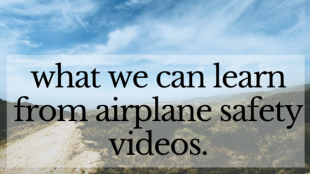What Airline Safety Videos Can Teach eLearning


Sitting down on an Icelandair flight from Seattle to Reykjavik, I dutifully placed my laptop under my seat and clicked on the seatbelt, preparing to grab a magazine for when the safety video droned on in the background. To my immediate surprise however, a soft melody played, dragging my eyes to the screen in front. What followed was novel: I watched the entire video, beginning to end. It was one of the most beautiful airline safety videos I had ever seen (that sentence being one of the most seemingly paradoxical I’ve ever written). You can watch it for yourself below:
https://www.youtube.com/watch?v=6F99x4ngp6w
Following the footsteps of airline companies such as Virgin America and Delta, the emerging trend for entertaining videos has gained traction.
Virgin America
https://www.youtube.com/watch?v=DtyfiPIHsIg
Delta
https://www.youtube.com/watch?v=Vttuonfu2BM
Similarly in the elearning world, there has been a rising trend towards gamification and simulations, that is, making courses more engaging for the learner. The following are three techniques that these airlines have used to make their content meaningful, and the takeaways for elearning course development:
Humor:
Some might argue that a humorous format belies the purpose of a safety video, but what is the use of learning information if you can’t remember it? Similarly, what use is taking an online course if it’s supremely boring? When none of the information is retained there is very little value in taking it, causing subtle annoyance or apathy in the workplace. This is where humor comes in. Humor is proven to boost retention. Additionally, according to this article by Faculty Focus, humor improves a sense of cohesion in the classroom, and while elearning courses don’t take place in a traditional classroom, a sense of cohesion can be created between the student and the online course or instructor.
OpenSesame hosts several courses that utilize humor, such as Service: Service and the City, in which you follow Samantha in a Sex in the City type dilemma, or Harassment: Harassment House of Horrors, a Cartoon Compliance course in which the learner navigates through a haunted house to learn about harassment.
Relevance:
Most corporate training lessons and all airline safety videos are mandatory. If this is true, why not make the experience as engaging and memorable as possible? One way of doing this is by making a course relevant with real world examples, and even pop culture references. Delta Air does a spectacular job of referencing pop culture in their ad, and Icelandair’s video stays relevant by using advanced technology and a wide range of resources to film. While the former video might not make sense in 20 or even 10 years, it catches attention by being so up-to-date (it currently has almost 11 million views on Youtube). In terms of elearning course videos, references can force you to keep the material you provide fresh and current. Like humor, relevance helps the learner identify with the material, and subsequently remember.
High Production Quality:
Finally, what these successful airline safety videos have in common is that effort and money was clearly spent on all three. They took a required learning experience that could have been dull and disregarded, and turned them into highly watched videos. How? From the music to the setting to the animations to even the cinematography, you can tell the airlines went through all the steps to make the experience valuable for the passenger. The quality of the Icelandair video immediately stood out to me, and for the next four flights with the airline, I watched that safety video every single time. Likewise, quality matters for elearning courses. Not every seller can provide movie-like videos, however, good music, lighting, and animations can greatly benefit a mandatory course. Through humor, relevance, and ensuring your course is the highest quality it can possibly be, you are on the path to creating a learning experience that will stay with the viewer long after they have closed the browser.



